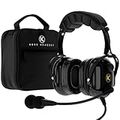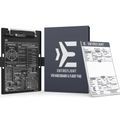Hi Reader,
Weather kills more student pilots than aircraft failures.
Yet many still treat aviation weather as a side topic in ground school. That mindset needs to change.
Understanding aviation weather isn’t optional—it’s a decisive factor in your ability to fly safely, plan flights confidently, and make split-second choices in the cockpit.
Here’s what smart pilots know—and apply—about weather:
Basic Forecasts Are Not Enough
Checking the METAR and TAF is step one, not the full picture. Ask yourself:
- What weather systems are behind the forecast?
- How fast are they moving?
- Will local terrain impact conditions?
For example, a TAF might predict “scattered clouds,” but if those clouds are at your minimums and rising terrain is nearby, your VFR flight could trap you fast.
|
|
Pilot Institute Airplane Courses
Enrol on one of Pilot Institute's many popular courses. Choose from free and paid examples.
|
Start Reading Surface Analysis Charts
These charts show pressure systems, fronts, and isobars.
Mastering them helps you anticipate changes before they show up in a METAR or TAF.
Flying near a low-pressure system? Expect more instability. A cold front nearby? Prepare for wind shear or thunderstorms along your route.
Don’t Ignore the Upper Wind Forecast
At 3,000 feet and above, wind direction and speed affect:
- Groundspeed
- Fuel burn
- Magnetic heading
Many students skip this when planning cross-countries. That’s a mistake. Missing a 25-knot headwind aloft adds more than time—it might turn into a fuel emergency.
Get Familiar with Skew-T Diagrams
Yes, they look complex. Learn the basics:
- Temperature and dew point spread: Narrow means clouds and possible icing.
- Inversions: Signal stable, hazy layers.
- Wind shear: A major factor in takeoffs and approaches.
CFI tip: Skew-T decoded tools online make this easier than you think.
Build a Personal Weather Minimums Card
Don’t rely on VFR as your only guide. Create and carry your own limits:
- Minimum ceiling and visibility
- Crosswind component
- Time before sunset
- Fuel reserve margin
What are your no-go thresholds? Writing them down saves you from bad decisions later.
Flight Service Isn’t Dead
Yes, you have ForeFlight. Yes, you checked five apps.
Still—call Flight Service. Get a weather briefer to help you spot missed risks. Mention your route, your aircraft type, your alternate if needed.
They’re trained to see things your app doesn’t.
Ask Tough Questions
Before every flight:
- What don’t I know about today’s weather?
- What would cause me to cancel this flight?
- Is it safe—or am I trying to make it work?
Don’t fly to “get the hours.” Fly when the weather aligns with your experience and your limits.
Weather judgment is a core pilot skill. It’s not learned from a textbook—it’s earned through study, decisions, and experience.
Learn it early. Use it always. Stay alive.
Exclusive Discounts and Recommendations |
- Rod Machado's 40-hour Private Pilot eLearning Ground School.
Apply discount code BEN15%OFF at checkout for 15% off!
- Flight Outfitters - Pilot Gear, Apparel, Kneeboards
Apply discount code BEN5 at checkout for 5% off!
- How To Gain a Private Pilot License (Course)
"Superb structure, easy to follow and great visuals!" ~ Elina
|
Widen Your Horizons
|
💡 Today You Should Know
Learn something new every Friday. Join 2,000+ nerds and satisfy your curiosity one question at a time with topics including science, technology, history, and more. |
|
|
Affiliate Disclosure
As an affiliate for the products and services we promote we may earn a small commission from qualifying purchases. If you click through a link we share and make a purchase we may earn some commission from the sale. It doesn’t affect the price you pay.
|


